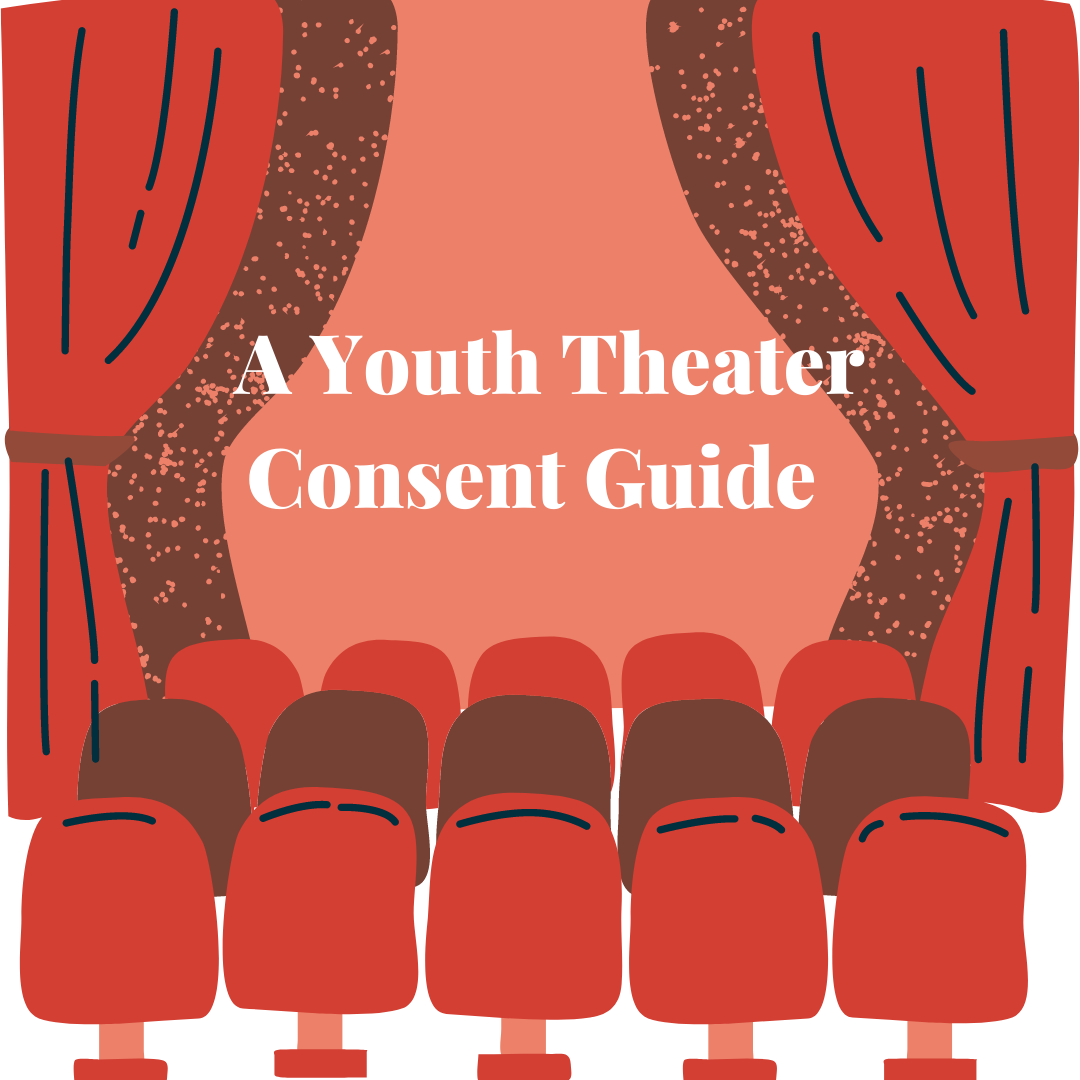A booklet highlighting consent-based best practices for youth theater participants
Written by: Daniel Lipson, Advocacy Center Youth Intern through the Stephen E. Garner Summers of Service program of the United Way of Tompkins County
I have been involved in youth theater since I was seven years old. Some environments have been wonderful, with great care taken regarding the safety, health, and comfort level of all participants. Some have been far from pleasant. Youth theater has a very fine line to walk. Children want to be treated like professionals, we want to learn, but we also want to have fun. And, just like professionals, we don’t want to do anything that makes us feel unsafe. But (again, just like professionals) we don’t want to be seen as difficult and miss out on future roles if we are to express our concerns or take other action to address something that does not feel good for us. The responsibility rests on the youth theater programs to create a safe and consent-focused space where we feel that we can use our voices. But what should participants expect from their directors and other involved adults? What should we ask for? How can we speak up when we are feeling unsafe?
All of these questions led me to pick up a thread that had been created by a former Advocacy Center intern (and personal role model of mine) and to continue her work during my time here this summer. She worked on guidelines for adults involved in youth theater based on recommendations for youth serving organizations developed by groups like The Enough Abuse Campaign. I decided to take a more youth-centered approach, creating a peer-to-peer theater consent guide to empower participants and give them the tools they need to feel safe; tools that I could have certainly used in the past.
Theater people are wonderful, often wacky, seldom quiet, and extremely welcoming. However, with a close-quarters environment and very touchy-feely people, this can quickly change to a space where boundaries are assumed or even ignored. There are also very strict social hierarchies in most theater spaces, dictated by cast lists and directors. With pressure from both directors and peers, it becomes increasingly difficult to speak up about anything that may be making you uncomfortable. As is human nature, we just want to fit in. If speaking up is not already a part of the culture of the company, traversing this new territory, especially as a less experienced or younger actor, feels virtually impossible. Coupled with this barrier is a lack of known language that prevents nearly everyone from speaking up when they are made to feel uncomfortable.
This Youth Theater Consent Guide includes an overview of critical definitions, such as consent, how to tell if a space is safe for you, self care after the production, boundaries in dressing rooms and backstage, boundaries outside of the space, what to do if a space is unsafe for you or becomes unsafe, how to help a fellow participant, what to expect from consent-focused adults, and how to start a conversation about making a consent-focused space. The document focuses on empowering youth theater participants and giving them the tools to speak up. We should be able to expect adults in our spaces to prioritize our safety and informed consent at all times.
In order to create this guide, I reflected on my own experiences and did research on existing guidelines and similar documents. One of the most valuable resources I found was The 5 Cs of Intimacy: In Conversation with Siobhan Richardson. This article provides guidelines for best practices when staging intimate scenes, but I found the 5 Cs applicable to all of theater. In preparation for this guide’s development, I discussed concerns surrounding safety and consent in theater directly with my friends and peers. These conversations included an ACTion-led (ACTion is the Advocacy Center’s student activism group) discussion about theater and consent over Google Meet. I shared drafts of this guide with teens, college students and adults working in theater as well as staff at the Advocacy Center and appreciate all the feedback they provided. While I have yet to find other peer guides like this, I am optimistic that more will be created soon.
The document is available for the many youth theater spaces throughout Tompkins County and any others interested (see below). I hope that it will be incorporated into existing orientation and/or onboarding processes for new youth theater productions and participants. Ultimately, my goal is to give everyone a framework to help themselves and others, honor boundaries, and speak up when they need to.
If you are interested in reading and/or distributing the Youth Theater Consent Guide
- a digital version can be read here
- Download, share, and print using this: PDF version (tip: print as a booklet)
- Limited printed copies are available, please email the Advocacy Center at info@actompkins.org
Within Tompkins County, you can invite Advocacy Center Education Department staff to facilitate conversations and education programs with youth and adults about consent-based practices, youth safety, and sexual harassment/abuse prevention. Staff also offer consulting and professional trainings for youth serving organizations.
- Information about the Enough Abuse Guide and Fact Sheets for Schools and Youth Serving Organizations can be found here.
- Information about local Enough Abuse Tompkins consulting and workshops can be found here.
- To plan a discussion or ask questions, email info@actompkins.org
The 5 Cs of Intimacy: In Conversation with Siobhan Richardson
theatreartlife.com/one-and-done/5-cs-intimacy-conversation-siobhan-richardson/
